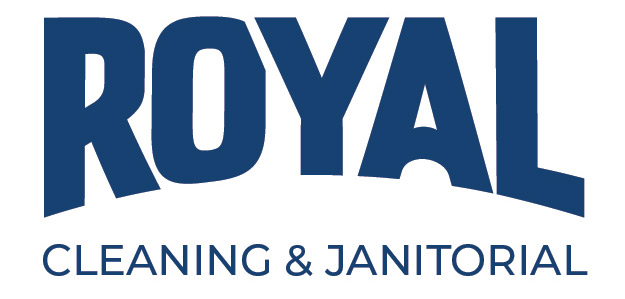Hints
KEY:
1. Dry Solvent, 2. All Purpose, 3. Brown-Ex Tannin, 4. Odor-Ex Tannin, 5. Gum Remover Spotter, 6. Rinse Water
| Stain | Use First | Use Second | Use Third |
| Beer | 2 | 6 | |
| Berry Stains | 2 | 3 | 6 |
| Blood | 6 | 2&4 | 6 |
| Butter & Fats | 1 | 2 | 6 |
| Chewing Gum | 5 | 1 | 6 |
| Chocolate | 2 | 3 | 6 |
| Coffee | 2 | 3 | 6 |
| Cosmetics | 1 | 2 | 6 |
| Crayon | 1 | 5 | 6 |
| Cream | 2 | 6 | |
| Eggs | 2 | 4 | 6 |
| Fruit & Juices | 2 | 3 | 6 |
| Furniture Polish | 1 | 6 | |
| Glue | 1 | 6 | |
| Gravy | 2 | 4 | 6 |
| Grease | 1 | 6 | |
| Ice Cream | 2 | 6 | |
| Inks | 1 | 2 | 6 |
| Ketchup | 2 | 6 | |
| Lipstick | 1 | 2 | 6 |
| Liquor | 2 | 6 | |
| Mayonnaise | 2 | 4 | 6 |
| Milk | 2 | 4 | 6 |
| Mustard | 2 | 3 | 6 |
| Nail Polish | 1 | 6 | |
| Odors | 4 | 2 | 6 |
| Oil | 1 | 6 | |
| Paaint | 1 | 2 | 6 |
| Salad Dressing | 2 | 6 | |
| Shoe Polish | 1 | 6 | |
| Soda | 2 | 3 | 6 |
| Tar | 1 | 5 | 6 |
| Tea | 2 | 3 | 6 |
| Unknown | 1 | 2 | 6 |
| Urine | 2 | 4 | 6 |
| Vomit | 2 | 4 | 6 |
| Wax | 1 | 5 | 6 |
| Wine | 2 | 3 | 6 |
| Dilution Ratio | Oz Per Gal |
| 1to4 | 32 |
| 1to5 | 26 |
| 1to10 | 12 |
| 1to12 | 10 |
| 1to15 | 8 |
| 1to20 | 6 |
| 1to32 | 4 |
| 1to40 | 3 |
| 1to50 | 2.5 |
| 1to60 | 2 |
| 1to64 | 2 |
| 1to100 | 1 |
| 1to128 | 1 |
| 1to256 | 0.5 |
Divide dilution into cost per gallon. Examples:
Example 1
256 dilution selling at
$12.30 per gallon:
$12.30 / 256 = .048 or
approximately 5 cents per gallon ready to use.
Example 2
1:1O dilution selling at $4.00
per gallon: $4.00 / 11 = .36
or 4 cents per gallon ready to use
Divide ounces per gallon into 128
Example:
1 1/2 oz, per gallon dilution 128 / 1.5 = 85
answer = 1:85 dilution ratio
Note: It is necessary to first convert dilution to ounces for one gallon.
Example:
Dilution is 10 ounces
per 5 gallons. Divide 10 by 5
(10/5 = 2) Answer: two ounces
per gallon. Now divide the ounces
per gallon into 128 (128 / 2 = 64).
Answer: Use dilution is 1:64
Divide dilution ratio into 128
Example:
1. 1:85 dilution 128 / 85 = 1.5
Answer = 1.5 ounces per gal.
Multiply percentage of active disinfectant times 10,000, and divide by use-dilution rate
% active x 10,000
dilution rate
Examples:
Given active percentage if 4.5%.
1. At 1:256 (1/2 oz. per gallon)
(4.5 x 10,000) / 256 = 176
ppm active
2. At 1:128 (I oz. per gallon)
(4.5 x 10,000) / 128 = 352
ppm active
| Dilution Ratio | Oz Per Gal |
| One Gallon= | 4 Quarts |
| 8 pints | |
| 16 Cups | |
| 128 Oz | |
| One Quart= | 2 Pints |
| 8 pints | |
| 4 Cups | |
| 32 Oz | |
| One Pint= | 2 cups |
| 16 Oz | |
| One Cup= | 8 Oz |
| One Ounce= | 2 tablespoons |
| 6 teaspoons | |
| One Tablespoon= | 3 teaspoons |
| 3 teaspoons | = | 1 tablespoon | = | 15ml |
| 8 tablespoons | = | 1/2 cup | = | 118ml |
| 16 tablespoons | = | 1 cup | = | 237ml |
| 1 fluid ounce | = | 2 tablespoons | = | 30 ml |
| 8 fluid ounces | = | 1 cup | = | 237 ml |
| 16 fluid ounces | = | 2 cups or 1 pint | = | 473 ml |
| 32 fluid ounces | = | 1 quart or 4 cups | = | 946 ml |
| 128 fluid ounces | = | 1 gallon | = | 3.8 liters |
F = 9/5 (C) + 32
C = 5/9 (F – 32)
Most floor care programs are caused by improper product use. This quick reference guide will help identify problems, causes and solutions.
Problem: Finish is too sticky or tacky
| Cause: | Solution: |
| Finish is applied too thick. | Apply thin coats and allow each to dry before applying the next coat. |
| Not enough drying time between coats. | Under normal conditions finishes dry in 20-30 minutes. High humidity extends drying time. |
| Restorer not properly diluted or applied too frequently. | Follow label instructions. Under-diluting or overuse can leave a sticky residue. |
| Restorer / maintainer not burnished soon enough after application. | When dry, restorer/maintainer will continue to soften finish if it is not burnished. |
| Floor not properly rinsed before application of finish. | Thoroughly rinse and neutralize floor after stripping. Use neutral cleaner in proper dilution. |
| Improper use of disinfectants. | Measure carefully and follow label directions. |
| Seperation of finish. | Finish may have been exposed to prolonged heat causing separation in the product. Shake or stir before using. |
Problem: Finish swirls or scratches
| Cause: | Solution: |
| Pad is too aggressive. | Use the recommended pad for a particular task whether it be burnishing or cleaning. |
| Pad is dirty. | Clean with a wire brush or put pad in deep sink and spray off the build-up. Hang up to dry. |
| Floor is dirty or sandy. | Use walk-off mats; dust thoroughly before burnishing. |





